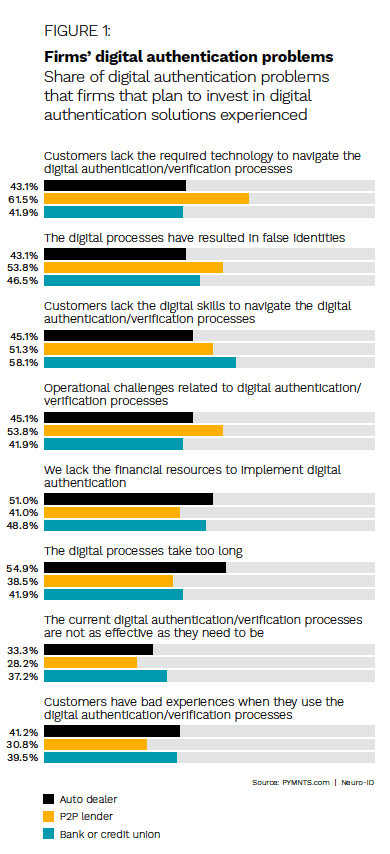PYMNTS Intelligence: Behavioral Analytics’ Role In Multilayered Fraud Defense Systems

A recent PYMNTS study found that 11% of credit and debit card users experienced some form of fraud in 2021, as did more than 5% of consumers using social media platforms, banks, eCommerce and mobile phone networks. Digital fraud is clearly a pervasive problem, and bad actors are becoming more creative in their techniques. Social engineering, account takeovers, identity fraud and phishing are just some of the methods deployed, and fraudsters are relentless in their efforts to develop new schemes.
Banks and merchants have scrambled to find a magic bullet for this diverse and growing array  of tactics. Popular choices include biometrics, multifactor authentication, anomaly detection and others, but each has its own security loopholes that fraudsters can detect and exploit.
of tactics. Popular choices include biometrics, multifactor authentication, anomaly detection and others, but each has its own security loopholes that fraudsters can detect and exploit.
Behavioral analytics is an essential instrument in any fraud defense toolkit, but it, too, cannot achieve its maximum effectiveness in a vacuum. This month, PYMNTS explores the challenges organizations face when deploying piecemeal authentication measures and why behavioral analytics is a critical facet of a multilayered customer verification system.
Why One-Size-Fits-All Solutions Are Ineffective
Businesses’ problems with authenticating customers are legion, often because of reliance on a single security stack. Recent PYMNTS data revealed that 54% of peer-to-peer (P2P) lenders, 47% of banks or credit unions and 43% of car dealerships have wrestled with false identities resulting from their authentication systems. Similarly, 37% of banks or credit unions, one-third of auto dealers and 28% of P2P lenders said their current digital authentication processes are not as effective as possible. Up to 41% of these businesses reported bad customer experiences when using digital authentication processes.
If authentication failures inadvertently admit bad actors, it can cost businesses huge sums. The average cost of a data breach climbed to $4.24 million in 2021, up 10% from 2020. Subpar customer authentication is one of the leading causes of these data breaches, with compromised credentials causing 20%, beating out phishing and cloud misconfiguration. Data breaches harm the companies that suffer them and the customers, with personally identifiable information leaked in 44% of these breaches. This transgression can ruin customer trust, ultimately costing businesses far more than the initial damage from the data breach.
Implementing a multilayered security and authentication system is essential for any company that wishes to retain its customers’ trust. Behavioral analytics can be a vital layer in this shield.
Advantages of Multilayered Behavioral Analytics Systems
Organizations’ defenses should be no less diverse than the range of methods bad actors deploy to breach them. Biometrics, for example, can confirm that customers’ identifying documents match their physical images, but some fraudsters have been able to fool selfie-recognition systems by using photos or videos of their intended victims. Biometrics used in tandem with multifactor authentication requires more information for fraudsters to stage successful attacks. Merchants have been able to reduce fraud volumes by 71% and total fraud losses by 12% by leveraging multilayered solutions, in fact.
Behavioral analytics should be an integral part of multilayered security systems, operating as a second line of defense after customers have been authenticated via biometrics, multifactor authentication or some other method at the point of entry. Even fraudsters who manage to spoof user images or intercept verification codes still have to enter false data, and their typing patterns could give them away. A case study from Neuro-ID determined that a software-as-a-service (SaaS) provider reduced its fraud rates by 35% by having a behavioral analytics engine work with the company’s existing password-based system in a multilayered security network.
Fraudsters continue to innovate their strategies, placing security systems at risk of obsolescence as bad actors find workarounds. Such breakthroughs could strip companies of all defenses if they rely on single security layers. Those deploying multifaceted security approaches will find themselves on much better footing.

